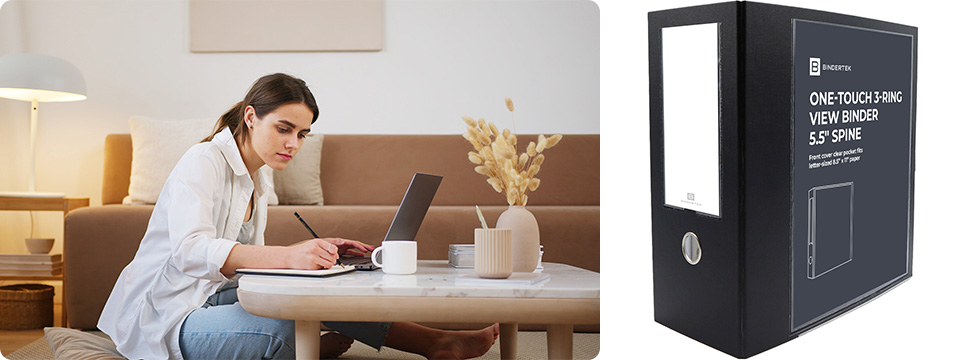Preparing for the Unexpected with an Emergency Binder
Posted by Bindertek on Nov 14th 2023
In the midst of an emergency, maintaining a clear head and a composed approach is essential, and that's where an emergency binder comes in. Acting as a comprehensive place for your most crucial family information, documents, and emergency plans, this binder ensures that you can swiftly access vital details when you need them most. The peace of mind derived from having all your essential information in one easily accessible location is invaluable. To ensure your family is prepared in any emergency, you’ll want to create a binder before you actually need it.
What kind of emergency should you be preparing for?
- Medical Emergencies: In case of unexpected health crises, chronic illnesses, or accidents.
- Family Deaths: To manage important details and arrangements during a difficult time.
- Financial Crises: Providing quick access to insurance policies, financial records, and important contacts.
- Evacuations: Having essential information ready in case you need to leave your home quickly.
- Natural Disasters: Such as earthquakes, hurricanes, tornadoes, floods, wildfires, or severe storms.
- Legal Issues: With copies of important legal documents, like wills, trusts, and power of attorney.
- Home Emergencies: Such as a house fire or a major home repair situation.
- Personal Crisis: In situations where you may need support or assistance due to personal challenges.
- Identity Theft or Loss: To help recover important documents and navigate identity theft issues.
- Pandemics or Health Crises: Ensuring you have access to important health records and emergency plans.

Why is it important to have an Emergency Binder?
An emergency binder consolidates all critical information, such as personal identification, medical information, and financial records, in a single location. This makes it easier for both you and your loved ones to access vital details quickly. Here is a suggested breakdown of what to include:
Personal Information: Full names, birthdates, and social security numbers for all family members. Copies of identification documents (passports, driver's licenses, etc.).
Contact Information: Emergency contacts (family, friends, neighbors). Contact information for doctors, healthcare providers, and schools.
Medical Information: Health histories for each family member. Medications, dosages, and allergies. Copies of health insurance cards and policies.
Financial Information: Bank account information. Copies of credit cards. Insurance policies (life, health, home, auto, renters).
Legal Documents: Wills and trusts. Power of attorney documents. Deeds and titles for properties and vehicles.
Emergency Plans: Evacuation plans with designated meeting points. Emergency contact cards for each family member. Home emergency procedures.
Household Inventory: A list of valuable possessions. Receipts for major purchases. Home insurance policy details.
Pet Information: Vaccination records. Pet emergency contact information. Special care instructions.
Utilities and Services: Contact information for utility providers. Account numbers and service details.
Important Records: Social security cards. Marriage certificates and divorce decrees. Adoption papers.
Technology Information: Passwords for important accounts. Information on how to access important online accounts.
Education and Employment: Copies of diplomas and transcripts. Employment contracts or relevant documents.
Miscellaneous: Any other documents or information relevant to your family's specific needs. Evacuation routes, and meeting points. Emergency supplies and their locations.
Ensure your emergency binder is kept in a secure but easily accessible location. Regularly update the information to reflect any changes in your family situation or important documents. Customize the contents based on your unique circumstances and the types of emergencies most likely to affect your area.
What kind of binder should you use?
Arrange your emergency binder in a view binder featuring custom index tabs, or opt for a robust metal binder for enhanced durability in challenging conditions. Ensure the selected binder has sufficient space for adding new documents as your circumstances change, and regularly update your emergency binder as necessary.
By preparing an emergency binder, you are taking proactive steps to safeguard yourself and your loved ones in times of crisis. Although this binder's primary goal is to aid you during an emergency, you might even find yourself using this binder frequently for day-to-day tasks!

